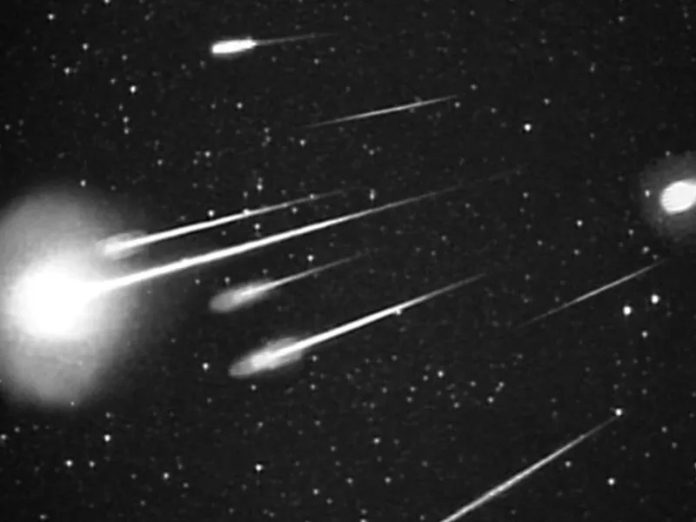
We’ve all read the advice, during a meteor shower there is no equipment needed.
All you need to do is lay back and wonder at one of the most spectacular sights the universe has to offer.
That’s about it though and while you lay back on a lounger and watch it really can be a wonderfully grounding and relaxing experience.
Unless you happen to be on National TV and miss a meteor behind your head and just tell the world there’s nothing to see. Not that I’m bitter about that of course!
It’s quite easy to get confused; a meteor is a piece of rock that has fallen through the Earth’s atmosphere and been destroyed on its way down, a meteorite survives the plunge and a meteoroid is a piece of space rock floating through space before it encounters the atmosphere.
We can see meteors any night of the year and these are called sporadic meteors however around 20 times a year we can enjoy a burst of meteor activity in events known as meteor showers. There are other showers but these are often faint and barely even noticeable.
Individual meteors are seen as they plummet to Earth. Their passage through the atmosphere causes the gas to heat and emit light which we see as the familiar streak of light.
The atmosphere is of great importance to us because it protects us from countless meteoric visitors that would otherwise strike the surface.
Instead, only the largest get through but thankfully they are few and far between. Spacecraft and satellites of course orbit above the protective shield of the atmosphere and so are far more susceptible to damage.
Organisations like NASA take the risk of meteoroid impact very seriously and their greater concern is the sporadic meteors.
The showers that we all enjoy only raise the risk for a short time and their characteristics are well understand. This means that their risk profile can be very well calculated with NASA’s Meteoroid Environment Office issuing regular forecasts. The real risk though comes from outbursts, one off unexpected meteoroids or from the countless minor showers that are not yet well documented or understood.
This isn’t just a paper based exercise though. The International Space Station has been in orbit since 1998 and in that time has had to adjust its course numerous times. There have been occasions when the occupants have had to get into an escape module and distance themselves from the Station due to possible meteoroid impact. To date though, there has been no major damage. There are thousands of satellites in orbit to and damage has been sustained by some.
A paper recently published by Althea V. Moorhead and a small multi-discipline team from NASA’s Meteoroid Environment Office and the University of Western Ontraio looks at quantifying potentially hazardous meteor showers and looks at existing showers to determine which are high risk and of concern.
The team conclude that for a shower to be classed as hazardous, the number of meteoroids of a certain mass or larger that impact upon an exposed spacecraft surface in low Earth orbit over a unit of time (known as the meteoroid flux) must raise by 5% over the sporadic rate. This would contribute 105 Joules of energy, sufficient to damage relatively delicate spacecraft components. The team are clear that they do not recommend spacecraft should mitigate for this level but instead, at least highlight for investigations from meteoroid forecast reports.
Having identified the criteria, the team then assessed 74 of the established 110 meteor showers listed in the IAU Meteor Data Centre catalogue. They found that six showers would meet the criteria for being categorised as hazardous, indeed they exceeded the threshold by a factor of two! The showers of note are the daytime Arietids, Geminids, Perseids, Quadrantids, Southern Delta Aquariids and the daytime Xi Sagittariids. There are a further 11 showers that meet the threshold but do not exceed by a factor of two.
Clearly as the study shows spacecraft operators need to be very conscious of meteoroid activity not just in their orbital operations but also in design and planning. To those of us on the ground we can still of course, sit back and relax to enjoy the spectacle but it adds an interesting context that, as we step out into the universe, those wonderful showers pose a very real risk to the safety of our explorers.
Written by Mark Thompson/Universe Today.



